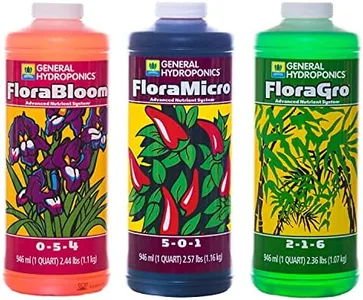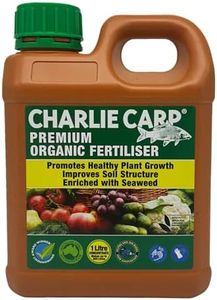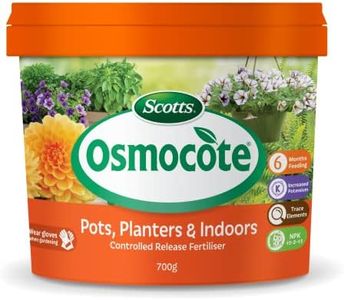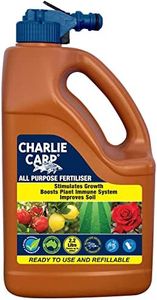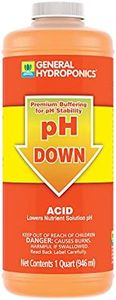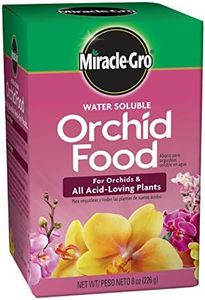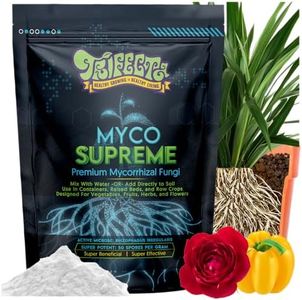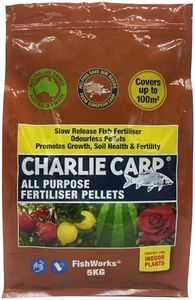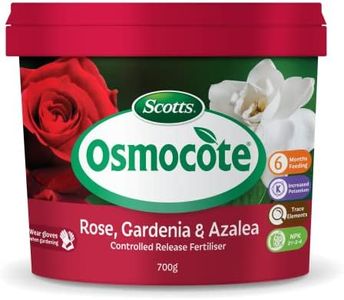We Use CookiesWe use cookies to enhance the security, performance,
functionality and for analytical and promotional activities. By continuing to browse this site you
are agreeing to our privacy policy
10 Best Flower Fertilizer
From leading brands and best sellers available on the web.Buying Guide for the Best Flower Fertilizer
Choosing the right flower fertilizer can make a significant difference in how vibrant and healthy your flowers grow. Fertilizers provide essential nutrients that plants need but may not always get from the soil. Picking the best fertilizer for your flowers involves understanding what your plants need and selecting a product that delivers the right balance of nutrients. Look at your specific plant type, growth stage, and the results you want—whether it's more blooms, greener leaves, or overall vitality.NPK RatioThe NPK ratio stands for Nitrogen (N), Phosphorus (P), and Potassium (K)—the three primary nutrients plants need. This ratio is important because it shows how much of each nutrient is in the fertilizer. Higher nitrogen helps with leafy growth, phosphorus supports root and bloom development, and potassium boosts general health and resistance. You’ll often see numbers like 10-10-10 or 15-30-15 on packages. Balanced ratios (like 10-10-10) are good for general flower maintenance, while bloom-boosting ratios (with higher middle number) help when you want more flowers. Consider your goal: if you want lush leaves, go for more nitrogen; for more blooms, pick higher phosphorus.
Form: Liquid, Granular, or Slow-ReleaseFertilizers come in liquid, granular, or slow-release forms. The form affects how quickly the nutrients become available to your flowers. Liquid fertilizers act fast and are suited for a quick boost or for plants that need immediate help. Granular fertilizers are sprinkled on the soil and work at a moderate pace, ideal for regular feeding. Slow-release types deliver nutrients over weeks or months, which is great if you want low-maintenance care. Your choice depends on how often you want to fertilize and how hands-on you want to be.
Organic vs. SyntheticOrganic fertilizers are made from natural sources like composted plants or animal waste, while synthetic fertilizers are made from minerals or chemicals. Organic fertilizers tend to enrich the soil and are safer for the environment, taking a bit longer to show results. Synthetic fertilizers act faster and offer precise nutrient amounts. If you want quick fixes, synthetic might be better; if you care about long-term soil health and eco-friendliness, organic is the way to go.
MicronutrientsBesides the main NPK nutrients, flowers also need micronutrients like iron, magnesium, and calcium. These help with things like greener leaves and stronger stems. Some fertilizers include these extra nutrients, which can be important if your soil is lacking. If your flowers have yellowing leaves or other unusual symptoms, a fertilizer with added micronutrients can help.
Specialty FormulasSome fertilizers are designed for specific flower types or purposes, such as rose food or bloom boosters. These formulas are tuned to the needs of certain plants or growth stages. If you’re growing a particular flower or want to trigger more flowering, specialty formulas can make it easier to help your plant thrive. Choose these if you have one main type of flower or a specific goal in mind.


